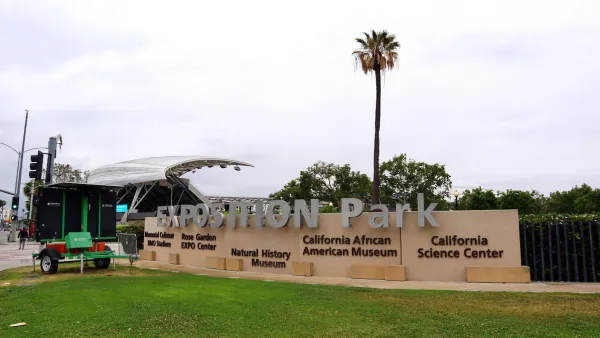In this reflection on the new book "Los Angeles in Maps", James Rojas wonders what shape the city will take in the near and far future.
"The book's historical and archival maps of Los Angeles give a powerful account of the city's growth and development, highlighting how topography, policies, resources and infrastructure systems shaped L.A.. The maps start with the Spanish ranches and L.A.'s early street grid, and move from there to early rail maps that predict the region's development patterns. Small towns surrounded by farms were located along rail lines. Oil wells and movie studios grew around those towns and shaped how we used our resources. All this helped create our messy, vibrant urban sprawl.
Today, it is impossible for any single policy, resource, or system to reshape L.A. the way those early systems did because we are just too massive in scale. We also no longer have plentiful tracts of empty land, nor the capital to build major projects. (Or, maybe we just built the wrong major projects, like massive housing on former orange groves at the urban edge?)."
Rojas argues that while infrastructure largely guided the form of the city throughout its history, ethnic and cultural diversity are playing a bigger role today in reshaping the city.
FULL STORY: Los Angeles in Maps: What's Next?

Analysis: Cybertruck Fatality Rate Far Exceeds That of Ford Pinto
The Tesla Cybertruck was recalled seven times last year.

National Parks Layoffs Will Cause Communities to Lose Billions
Thousands of essential park workers were laid off this week, just before the busy spring break season.

Retro-silient?: America’s First “Eco-burb,” The Woodlands Turns 50
A master-planned community north of Houston offers lessons on green infrastructure and resilient design, but falls short of its founder’s lofty affordability and walkability goals.

Test News Post 1
This is a summary

Analysis: Cybertruck Fatality Rate Far Exceeds That of Ford Pinto
The Tesla Cybertruck was recalled seven times last year.

Test News Headline 46
Test for the image on the front page.
Urban Design for Planners 1: Software Tools
This six-course series explores essential urban design concepts using open source software and equips planners with the tools they need to participate fully in the urban design process.
Planning for Universal Design
Learn the tools for implementing Universal Design in planning regulations.
EMC Planning Group, Inc.
Planetizen
Planetizen
Mpact (formerly Rail~Volution)
Great Falls Development Authority, Inc.
HUDs Office of Policy Development and Research
NYU Wagner Graduate School of Public Service




























